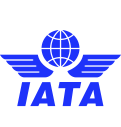Accident investigations have identified a poor safety culture as a factor that increases the likelihood of accidents and incidents. It is also recognized that enabling a strong organizational safety culture requires continual application of all employees at every level, but especially commitment from top executives, as leadership thoughts and actions cascade down the organization and impact the actions of all employees.
This is why providing greater visibility to the importance of Safety Leadership and Safety Culture in a safety-critical industry, such as aviation, is a priority and part of the IATA 3-pillar safety strategy.
To raise awareness on these important topics, IATA initiated the development the IATA Safety Leadership Charter. IATA’s "Safety Talks" initiative was launched to bring the Safety Leadership Charter to life.
Through these activities, IATA aims to promote learning, understanding and continuous improvement of organizational culture – practices and behaviours – that support the effective management of safety risks within the aviation ecosystem.
IATA Safety Leadership Charter
The Safety Leadership Charter has been developed in consultation with IATA members, and the wider aviation community, to support industry executives in evolving a positive safety culture within their organizations.
The Charter is geared toward strengthening organizational safety culture through highlighting this critical element as a driver for continuous improvement in safety performance, by proposing commitment to key leadership principles and supporting practical actions.
Guiding Principles:
- Lead obligation to safety through words and actions.
- Foster safety awareness with employees, the leadership team, and the board.
- Guide the integration of safety into business strategies, processes, and performance measures.
- Create the internal capacity to proactively manage safety and collectively achieve organizational safety goals.
- Create an atmosphere of trust, where employees are encouraged and confident to report safety-related information.
- Establish a working environment in which clear expectations of acceptable and unacceptable behaviors are communicated and understood.
- Create an environment where all employees feel responsibility for safety.
- Regularly assess and improve organizational Safety Culture.
For more information about the IATA Safety Leadership Charter and how to get involved, please contact our team.
The IATA Safety Talks feature industry leaders across geographies and cultures who share their unique perspectives and highlight the key role of Safety Leadership and Safety Culture in delivering a safer, more efficient and resilient business.
The Safety Talks will continue to expand with more insights from industry executives and staff across hierarchies.
“Starting with me as a CEO, a conscious safety culture is rooted in a company's leadership, and from there it goes through the entire organisation. Safety Leadership is the foundation of safety culture, and leading by example is vital. At SAS, we encourage an open safety culture that creates a trusting working environment, allowing employees to feel comfortable reporting observations, and where employees feel secure and confident to share mistakes without fearing reprimands. ”
Watch our latest video with Anko van der Werff, President and CEO, SAS, Member of IATA Board of Governors
Mark Searle
Global Director Safety, International Air Transport Association (IATA)
Shinichi Inoue
President and CEO, All Nippon Airways, Member of IATA Board of Governors
Detlef Kayser
Member of the Executive Board, Fleet and Technology, Deutsche Lufthansa
Patrick Ky
Executive Director of the European Union Aviation Safety Agency (EASA)
Eamonn Brennan
Director General, Eurocontrol
Danny Ho
Chief Executive Vice President, EVA Airways
Hassan Shahidi
President and CEO, Flight Safety Foundation
Yuji Akasaka
President and CEO, Japan Airlines, Member of IATA Board of Governors
Enrique Beltranena
CEO Volaris, Member of IATA Board of Governors
Anko van der Werff
President and CEO, SAS, Member of IATA Board of Governors
Guliz Ozturk
CEO, Pegasus Airlines
Ed Bastian
CEO, Delta Airlines
Campbell Wilson
CEO and Managing Director, Air India
Zhu Tao
President and CEO, Hainan Airlines, Member of IATA Board of Governors
Le Hong Ha
President and CEO, Vietnam Airlines
Jiri Marek
CEO, Air Serbia
Xie Bing
CEO and President of Xiamen Airlines
Michel Rousseau
CEO and President of Air Canada, Member of IATA Board of Governors
Akbar Al Baker
GCEO, Qatar Airways, Member of IATA Board of Governors
Pedro Heilbron
CEO, Copa Airlines, Member of IATA Board of Governors
Captain Stanley K. Ng
President and COO, Philippine Airlines
Irfan Setiaputra
President and CEO, Garuda Indonesia
We are convinced that a strong safety culture is a primary enabler of effective safety management. There is no point having all Safety Management System elements in place if they are not used.
The "I-ASC" (IATA Aviation Safety Culture) survey, specifically designed for aviation, provides insight into the challenges and risk areas of front line and management employees, as well as areas of improvement and hazards in safety performance. It also provides organizations with the means to meet ICAO Safety Management System (SMS) / State Safety Program (SSP) requirements to measure and continuously improve their safety culture.
